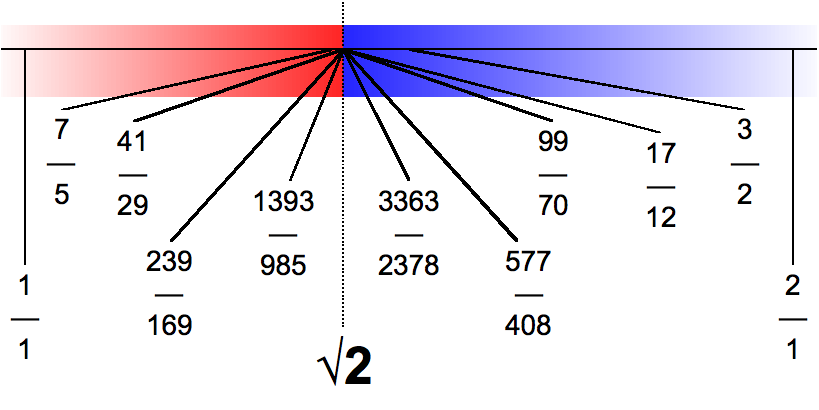|
Genidentity
As introduced by Kurt Lewin, genidentity is an ''existential relationship'' underlying the genesis of an object from one moment to the next. What we usually consider to be an object really consists of multiple entities, which are the phases of the object at various times. Two objects are not identical because they have the same properties in common, but because one has developed from the other. Lewin introduced the concept in his 1922 Habilitationsschrift ''Der Begriff der Genese in Physik, Biologie und Entwicklungsgeschichte''. It is today perhaps the only surviving evidence of Lewin's influence on the philosophy of science. However, this concept never became an object of widespread discussion and debate in its own terms. Rather, it was extracted from its context by philosophers such as Rudolf Carnap, Hans Hermes, Hans Reichenbach, Adolph Grünbaum, and Bas van Fraassen who incorporated this concept into their own theories such as the topology of the universe or the axiomatizatio ... [...More Info...] [...Related Items...] OR: [Wikipedia] [Google] [Baidu] |
Kurt Lewin
Kurt Lewin ( ; 9 September 1890 – 12 February 1947) was a German-American psychologist, known as one of the modern pioneers of social, organizational, and applied psychology in the United States. During his professional career Lewin applied himself to three general topics: applied research, action research, and group communication. Lewin is often recognized as the "founder of social psychology" and was one of the first to study group dynamics and organizational development. A ''Review of General Psychology'' survey, published in 2002, ranked Lewin as the 18th-most cited psychologist of the 20th century. Biography Early life and education Lewin was born in 1890 into a Jewish family in Mogilno, County of Mogilno, Province of Posen, Prussia (modern Poland). It was a small village of about 5,000 people, about 150 of whom were Jewish. Lewin received an orthodox Jewish education at home. He was one of four children born into a middle-class family. His father owned a small ... [...More Info...] [...Related Items...] OR: [Wikipedia] [Google] [Baidu] |
Counterpart Theory
In philosophy, specifically in the area of metaphysics, counterpart theory is an alternative to standard ( Kripkean) possible-worlds semantics for interpreting quantified modal logic. Counterpart theory still presupposes possible worlds, but differs in certain important respects from the Kripkean view. The form of the theory most commonly cited was developed by David Lewis, first in a paper and later in his book ''On the Plurality of Worlds''. Differences from the Kripkean view Counterpart theory (hereafter "CT"), as formulated by Lewis, requires that individuals exist in only one world. The standard account of possible worlds assumes that a modal statement about an individual (e.g., "it is possible that x is y") means that there is a possible world, W, where the individual x has the property y; in this case there is only one individual, x, at issue. On the contrary, counterpart theory supposes that this statement is really saying that there is a possible world, W, wherein exists ... [...More Info...] [...Related Items...] OR: [Wikipedia] [Google] [Baidu] |
Real Number
In mathematics, a real number is a number that can be used to measurement, measure a ''continuous'' one-dimensional quantity such as a distance, time, duration or temperature. Here, ''continuous'' means that values can have arbitrarily small variations. Every real number can be almost uniquely represented by an infinite decimal expansion. The real numbers are fundamental in calculus (and more generally in all mathematics), in particular by their role in the classical definitions of limit (mathematics), limits, continuous function, continuity and derivatives. The set of real numbers is mathematical notation, denoted or \mathbb and is sometimes called "the reals". The adjective ''real'' in this context was introduced in the 17th century by René Descartes to distinguish real numbers, associated with physical reality, from imaginary numbers (such as the square roots of ), which seemed like a theoretical contrivance unrelated to physical reality. The real numbers subset, include t ... [...More Info...] [...Related Items...] OR: [Wikipedia] [Google] [Baidu] |
Johann Wolfgang Goethe-University
Goethe University (german: link=no, Johann Wolfgang Goethe-Universität Frankfurt am Main) is a university located in Frankfurt am Main, Germany. It was founded in 1914 as a citizens' university, which means it was founded and funded by the wealthy and active liberal citizenry of Frankfurt. The original name was Universität Frankfurt am Main. In 1932, the university's name was extended in honour of one of the most famous native sons of Frankfurt, the poet, philosopher and writer/dramatist Johann Wolfgang von Goethe. The university currently has around 45,000 students, distributed across four major campuses within the city. The university celebrated its 100th anniversary in 2014. The first female president of the university, Birgitta Wolff, was sworn into office in 2015, and was succeeded by Enrico Schleiff in 2021. 20 Nobel Prize winners have been affiliated with the university, including Max von Laue and Max Born. The university is also affiliated with 18 winners of the Gottfri ... [...More Info...] [...Related Items...] OR: [Wikipedia] [Google] [Baidu] |
Grandfather's Old Axe
The Ship of Theseus is a thought experiment about whether an object that has had all of its original components replaced remains the same object. According to legend, Theseus, the mythical Greek founder-king of Athens, had rescued the children of Athens from King Minos after slaying the minotaur and then escaped on a ship to Delos. Every year, the Athenians commemorated this legend by taking the ship on a pilgrimage to Delos to honor Apollo. The question was raised by ancient philosophers: After several centuries of maintenance, if every part of the Ship of Theseus had been replaced, one at a time, was it still the same ship? In contemporary philosophy, this thought experiment has applications to the philosophical study of identity over time, and has inspired a variety of proposed solutions in contemporary philosophy of mind concerned with the persistence of personal identity. History In its original formulation, the "Ship of Theseus" paradox concerns a debate over whethe ... [...More Info...] [...Related Items...] OR: [Wikipedia] [Google] [Baidu] |
Identity (philosophy)
In philosophy, identity (from , "sameness") is the relation each thing bears only to itself. The notion of identity gives rise to many philosophical problems, including the identity of indiscernibles (if ''x'' and ''y'' share all their properties, are they one and the same thing?), and questions about change and personal identity over time (what has to be the case for a person ''x'' at one time and a person ''y'' at a later time to be one and the same person?). It is important to distinguish between ''qualitative identity'' and ''numerical identity''. For example, consider two children with identical bicycles engaged in a race while their mother is watching. The two children have the ''same'' bicycle in one sense (''qualitative identity'') and the ''same'' mother in another sense (''numerical identity''). This article is mainly concerned with ''numerical identity'', which is the stricter notion. The philosophical concept of identity is distinct from the better-known notion of i ... [...More Info...] [...Related Items...] OR: [Wikipedia] [Google] [Baidu] |
Gestalt Psychology
Gestalt-psychology, gestaltism, or configurationism is a school of psychology that emerged in the early twentieth century in Austria and Germany as a theory of perception that was a rejection of basic principles of Wilhelm Wundt's and Edward Titchener's elementalist and structuralist psychology.Mather, George (2006) Foundations of Perception, Psychology Pressch.1 p.32 As used in Gestalt psychology, the German word ''Gestalt'' ( , ; meaning "form") is interpreted as "pattern" or "configuration". Gestalt psychologists emphasize that organisms perceive entire patterns or configurations, not merely individual components. The view is sometimes summarized using the adage, "the whole is more than the sum of its parts." Gestalt psychology was founded on works by Max Wertheimer, Wolfgang Köhler, and Kurt Koffka. Origin and history Max Wertheimer (1880–1943), Kurt Koffka (1886–1941), and Wolfgang Köhler (1887-1967) founded Gestalt psychology in the early 20th century. ... [...More Info...] [...Related Items...] OR: [Wikipedia] [Google] [Baidu] |
Symbolic Logic
Mathematical logic is the study of formal logic within mathematics. Major subareas include model theory, proof theory, set theory, and recursion theory. Research in mathematical logic commonly addresses the mathematical properties of formal systems of logic such as their expressive or deductive power. However, it can also include uses of logic to characterize correct mathematical reasoning or to establish foundations of mathematics. Since its inception, mathematical logic has both contributed to and been motivated by the study of foundations of mathematics. This study began in the late 19th century with the development of axiomatic frameworks for geometry, arithmetic, and analysis. In the early 20th century it was shaped by David Hilbert's program to prove the consistency of foundational theories. Results of Kurt Gödel, Gerhard Gentzen, and others provided partial resolution to the program, and clarified the issues involved in proving consistency. Work in set theory showed ... [...More Info...] [...Related Items...] OR: [Wikipedia] [Google] [Baidu] |
Rational Number
In mathematics, a rational number is a number that can be expressed as the quotient or fraction of two integers, a numerator and a non-zero denominator . For example, is a rational number, as is every integer (e.g. ). The set of all rational numbers, also referred to as "the rationals", the field of rationals or the field of rational numbers is usually denoted by boldface , or blackboard bold \mathbb. A rational number is a real number. The real numbers that are rational are those whose decimal expansion either terminates after a finite number of digits (example: ), or eventually begins to repeat the same finite sequence of digits over and over (example: ). This statement is true not only in base 10, but also in every other integer base, such as the binary and hexadecimal ones (see ). A real number that is not rational is called irrational. Irrational numbers include , , , and . Since the set of rational numbers is countable, and the set of real numbers is u ... [...More Info...] [...Related Items...] OR: [Wikipedia] [Google] [Baidu] |
Dedekind Cut
In mathematics, Dedekind cuts, named after German mathematician Richard Dedekind but previously considered by Joseph Bertrand, are а method of construction of the real numbers from the rational numbers. A Dedekind cut is a partition of the rational numbers into two sets ''A'' and ''B'', such that all elements of ''A'' are less than all elements of ''B'', and ''A'' contains no greatest element. The set ''B'' may or may not have a smallest element among the rationals. If ''B'' has a smallest element among the rationals, the cut corresponds to that rational. Otherwise, that cut defines a unique irrational number which, loosely speaking, fills the "gap" between ''A'' and ''B''. In other words, ''A'' contains every rational number less than the cut, and ''B'' contains every rational number greater than or equal to the cut. An irrational cut is equated to an irrational number which is in neither set. Every real number, rational or not, is equated to one and only one cut of ... [...More Info...] [...Related Items...] OR: [Wikipedia] [Google] [Baidu] |




